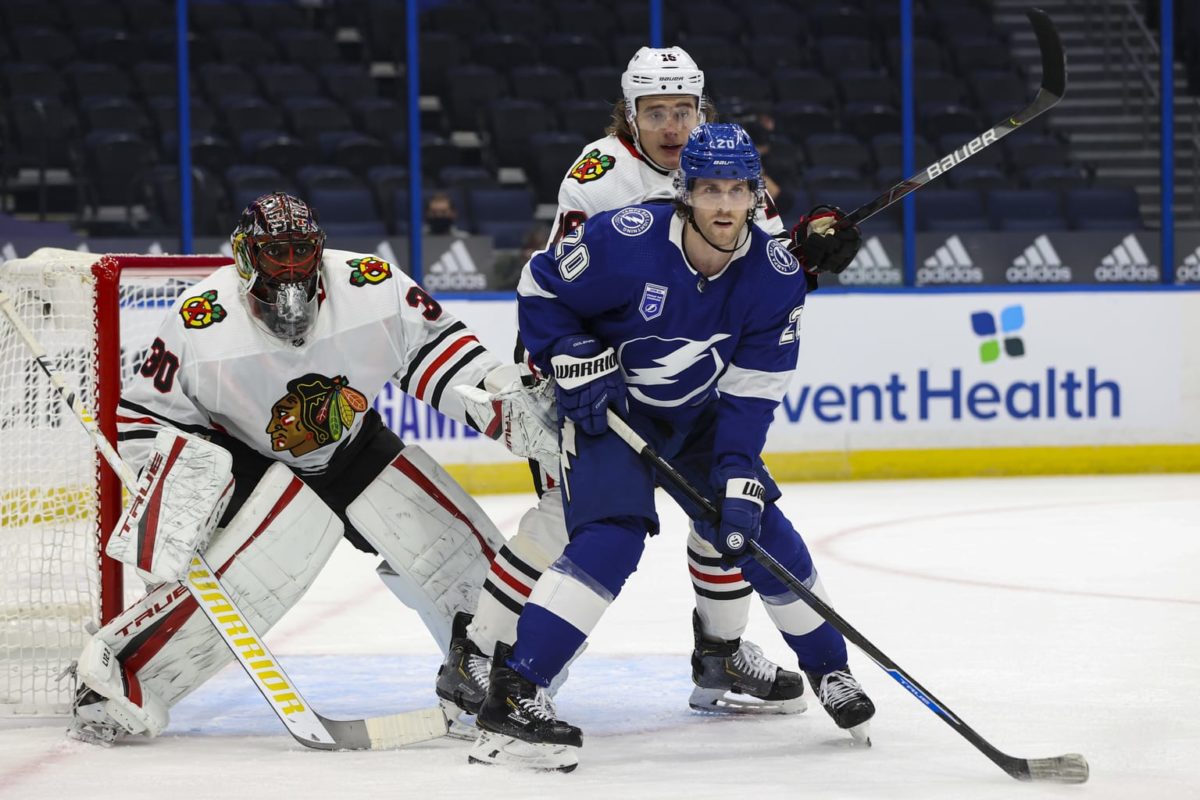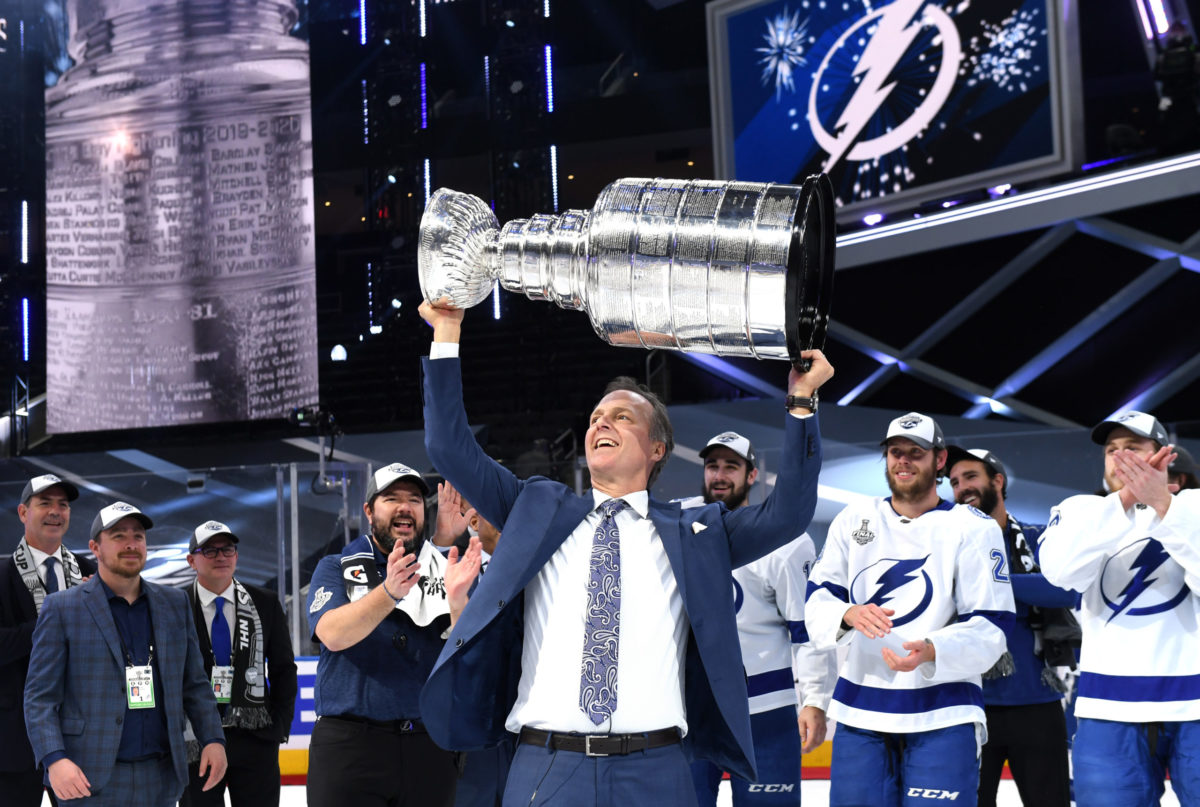To say that the start to the Tampa Bay Lightning’s 2020-21 season has been unusual would be a bit of an understatement. Besides the fact that they kicked off their title defense run in January instead of October, the Lightning’s early schedule has been in a near-constant state of flux due to the ongoing COVID-19 Pandemic.
Close to three weeks into the season, Tampa Bay has only played seven times after having two five-day breaks as their scheduled opponents were forced to push games due to COVID-19 complications. This has made it difficult to judge their play so far, as they haven’t been able to get into a real rhythm yet.
Given these delays, things have gone relatively well for the Bolts, however, as they have managed a record of 5-1-1. In years past, the franchise struggled with slow starts after breaks longer than three to four days, often leading to bad goals-against early and losses against opponents that they should have beat.

Despite their strong start to the season, the Lightning haven’t been perfect. The team has a few areas that they need to work through as they look to build upon their early season success.
Lightning Running a Deficit in Period 3
The first area of concern for Tampa Bay is how they are closing out games. So far, they have given up eight goals in the third period, while scoring just four themselves, meaning that they are being outscored two-to-one.
While you can argue that part of this lopsided average is due to Tampa Bay having the lead heading into the third, giving their opponents life late in games isn’t a habit that the Lightning want to fall into. In recent years, they have struggled to play complete 60-minute games in the regular season, often letting opponents jump out to a two-goal lead early or catching them relaxing with a lead in the third.
Related: Tampa Bay Lightning 3 Stars of the Month – January 2021
By comparison, throughout the 2019-20 season, Tampa Bay scored 79 goals in the third period, while giving up 73. While this may not be a stunning average, they were at least scoring more than their opponent, meaning that they were giving themselves a better chance to close out winnable games.
With a compressed season, you don’t want to give your rivals any momentum at the end of a game, especially since you will be seeing them again as soon as the next night. So, the Lightning need to get better at winning the third period, whether they have a big lead or are fighting to catch their opponent.
Penalty Troubles Still Worrying Lightning
One area the Lightning have struggled with is staying out of the penalty box. For years, the franchise has averaged more than 4 penalties per game, making them one of the most penalized teams in the league.
Through seven games, they have kept this average high, taking 4.11 penalties per game. While this places them 12th in the league, most teams take less than four penalties a game by the end of the season. Given how many more penalties teams are taking this year due to chippy games and a compressed schedule, it wouldn’t be surprising if this number actually increased as the season wears on.

Now, this doesn’t mean that the Lightning can’t be successful while taking a lot of penalties, as they averaged roughly 4.22 per game throughout the 2020 playoffs. It is something that can make an already difficult season harder, however, as their penalty kill is tested more often than one would hope, wearing down key defensive players.
Vasilevskiy’s Workload Isn’t Sustainable
There’s no doubt that Andrei Vasilevskiy is one of the NHL’s truly elite goaltenders. He is a perennial Vezina Award finalist and has proven that he is more than capable to carry a franchise all the way to a Stanley Cup.
Despite this, he is still human. Since the return to play in August, Vasilevskiy has started every game for the Lightning, giving him one of the hardest workloads for any goalie in the NHL. Especially with the compressed schedule, he could easily hit 45 starts out of Tampa Bay’s 56 games this season.
While he is capable of taking on this playing time, at some point the Lightning will need to lean on their veteran back-up, Curtis McElhinney, who hasn’t started a game since Mar. 8, 2020. No matter how great of aback-up McElhinney is, going close to a year without any playing time could make his first start few starts rough.

This means that the Lightning need to get McElhinney into a starting routine, especially if they want him to take on 10 to 15 games this season. Even if he struggles, it would help manage some of Vasilevskiy’s workload, which should keep him fresher for another deep run in the postseason.
Lightning Have Small Issues To Work Through
When you take into account the Lightning’s long postseason, the fact that they have managed a 5-1-1 record to start the 2020-21 season is impressive. Oftentimes, teams experience some kind of post-Cup hangover, but Tampa Bay hit the ice in mid-season form from their first game.
Related: Anthony Cirelli to Be Lightning’s Biggest X Factor in 2020-21
Due to this, the issues mentioned above are mostly just nitpicks from an otherwise great start to the season. The Lightning look ready to defend the Stanley Cup, and they should push to be the top seed in the Central Division if they continue playing as well as they have so far.